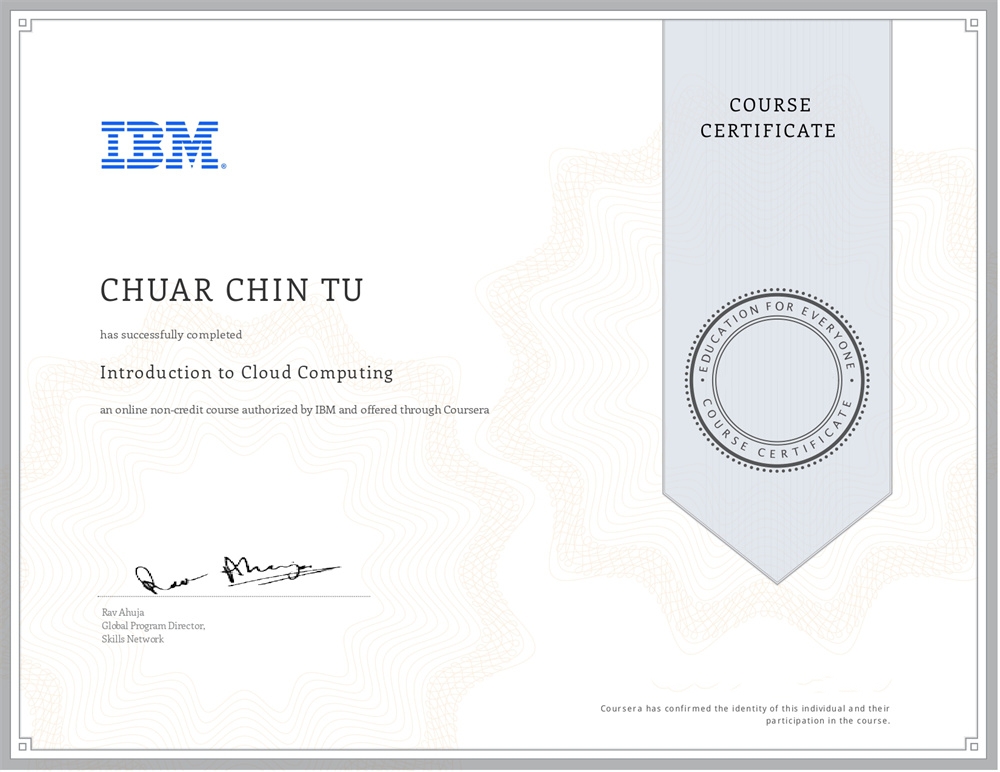Eric Chuar has completed the Introduction to Cloud Computing for Personal & Professional Productivity and received a certificate from IBM.
SCHOOL:
IBM
GRADUATED:
2020
DURATION:
6 Months

Cloud Computing Skills Gained
Define cloud computing and explain essential characteristics, history, the business case for cloud, and the emerging technologies enabled by cloud
Explain emerging Cloud related trends including HybridMulticloud, Microservices, Serverless, Cloud Native, DevOps, and Application Modernization
Describe the cloud service models- IaaS, PaaS, SaaS, and cloud deployment models- Public, Private, Hybrid; explain cloud infrastructure components
List and describe services of popular cloud platforms including AWS, Microsoft Azure, Google Cloud, IBM Cloud, Alibaba Cloud, and others
Course Perspective
Just finished the Introduction to Cloud Computing course, and man, was it a deep dive! Now, I’m not one to jump into courses without getting my hands dirty first. Certificates are just paper; the real deal is the knowledge and skills you gain. That’s especially true in fields like digital marketing and programming, where what you can do matters more than what you can show.
So why did I choose this course? Simple, cloud computing is the backbone of so many technologies today, and not everyone gets it. Plus, I love sharing what I learn, so this was a win-win for me.
Living in Malaysia and Singapore for years has made me realize it’s not just about business; it’s about sharing and growing together. Now that I’ve got a family and a little one to think about, the need to spread knowledge is more pressing than ever.
So, what did I learn?
- What is Cloud Computing?: The course kicked off with the basics—defining cloud computing, its history, and why it’s a big deal for businesses. This is super relevant for digital marketing, where cloud-based tools are becoming the norm.
- Emerging Trends: This section was like a sneak peek into the future, covering HybridMulticloud, Microservices, Serverless tech, Cloud Native, DevOps, and Application Modernization. Knowing these trends can give you an edge in almost any tech field.
- Cloud Service Models: We dove into IaaS, PaaS, and SaaS, as well as cloud deployment models like Public, Private, and Hybrid clouds. Understanding these models helps you choose the right solutions for different projects.
- Popular Cloud Platforms: The course rounded off with an overview of big players like AWS, Microsoft Azure, Google Cloud, IBM Cloud, and Alibaba Cloud. Knowing what each platform offers helps you pick the right one for your needs.
All in all, the course was like a masterclass in cloud computing. I can’t wait to use this knowledge in my digital marketing projects. And yes, I’ll definitely be sharing these insights, because what’s the point of learning if you’re not going to share, right?
